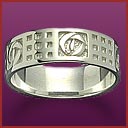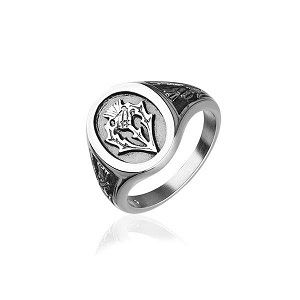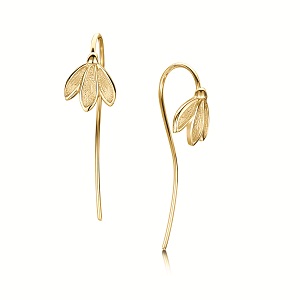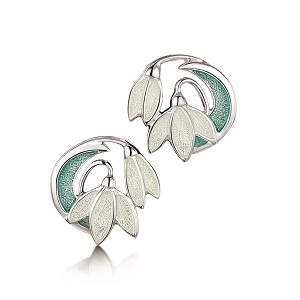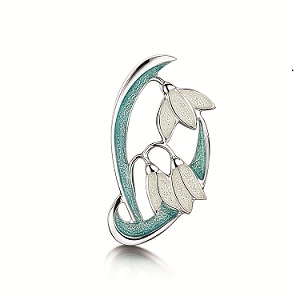About Mackintosh
Background
Charles Rennie Mackintosh was born in Glasgow, Scotland in June 1868. He was 1 of 11 children so there was not much space in his tenement household between both his parents and sharing with 10 brothers and sisters. Charles was a sickly child from the start of his life and he also had the disability of a club foot to bear. The medical profession suggested plenty of exercise and fresh air so it was common for Charles to get to wander the countryside and whet his appetite for nature, the living animals and plants. He would regularly doodle drawings of views, buildings and the countryside on his travels. He had a great talent for drawing and it showed even at this early stage.
After an argument with his father, a superintendent in the Glasgow police force, about his future career path, he single-mindedly decided to go to the Old Glasgow School of Art. A year later at the age of 16 , he became an apprentice to the architect John Hutchieson. For 10 years he studied part time at the Glasgow School of Art and carried on with his apprenticeship at the same time, excelling and winning prizes for his school work and innovative ideas. He won a scholarship in 1885 which took care of his school fees. He left the School of Art in 1894 and took on a position of junior draftsman at Honeyman and Keppie in 1889, becoming a junior partner in 1904.
Click here for Mackintosh Bracelets
After an argument with his father, a superintendent in the Glasgow police force, about his future career path, he single-mindedly decided to go to the Old Glasgow School of Art. A year later at the age of 16 , he became an apprentice to the architect John Hutchieson. For 10 years he studied part time at the Glasgow School of Art and carried on with his apprenticeship at the same time, excelling and winning prizes for his school work and innovative ideas. He won a scholarship in 1885 which took care of his school fees. He left the School of Art in 1894 and took on a position of junior draftsman at Honeyman and Keppie in 1889, becoming a junior partner in 1904.
Click here for Mackintosh Bracelets

Love Interests
Keppie and Charles became good friends and it was through his friend and employer that he met his first fiancé, Jessie Keppie. Everything was ticking away nicely until Charles broke off the engagement to Jessie which maddened her brother and broke their friendship. He ended the engagement with Jessie for a fellow student whom he met at the Glasgow school of art. He became infatuated by her. Her name was Margaret McDonald, a red haired slim woman who was thought to be above him in the social classes but never the less they married in 1900. As for Jessie, she never married, staying devoted to Charles memory and what might have been all the remainder of her spinster life.
Architecture & Achievements
Charles's eye favoured straight bold lines and grid patterns, simple and clean. A good example of this and well known to many is the high backed elegant chairs he designed for Hill house. They look very fragile because of the sheer height and ladder backs. Unfortunately Mackintosh went for things looking good, not practicalities. These chairs are rigid and not the nicest or most comfortable to sit on for any length of time. He also took a dislike to the natural grain effect of the wood he was working with and tried different treatments to disguise it, before settling on a jet black laquer finish which totally engulfed the grain. To contrast with the black he used the obvious white but sometimes favoured lilac and silver in interior design, furniture and textiles. His wife Margaret excelled in this area and with her influence as the guiding light they went for an almost oriental look with traditional Japanese influences. In the 1890's Mackintosh achieved international status in interior designs, craftwork and textiles. His life and fortunes were flourishing and he was particularly admired in Vienna. In contrast to contemporary fashion his work was light and elegant, fresh and original, as exemplified by the 4 remarkable tea rooms he designed in Glasgow during 1896-1904, and other domestic interiors of the early 1900's. Mackintosh's other chief projects were The Glasgow School Of Art 1896-1909, considered the original example of art nouveau architecture in Great Britain; Windy Hill, Kilmacolm 1899-1901 and the Hill House, Helensburgh 1902; the Willow Tea Rooms Glasgow 1904; Scotland St. School 1904-1906, and House for an Art Lover. Although the House was not realised during Mackintosh's lifetime, construction began in Bellahouston Park in 1989 and the House for an Art Lover was completed in 1996. By 1914 he had virtually ceased to practice and devoted himself to watercolour painting.
Click on the Rings above to view more Mackintosh Rings
Mackintosh Architecture
Glasgow School of Art
In 1896 the Governors of the Glasgow School of Art decided that they would run a competition to get a design for a new Glasgow School of Art. They only had a limited budget and it had to be much bigger than the original because they had a lot more students by then. The criteria was big spacious and light and airy on a budget of £14,000. This put many competitors off. Mackintosh's design was chosen but to this day none of the other originals have been found. Where did they go and did the governor Newberry sway the judging in Mackintosh's favour. We will never know! The building was totally different from any which had been erected before and caused a lot of emotion in people. You either loved it or hated it, there was no middle ground. The families who had the money to go to the school of art were middle and upper class and were used to their Victorian ornate surroundings with cherubs in gilt and patterned brocade. They said it didn't fit in with the other architecture and was too bare. The world were not ready as a whole to appreciate his foresight until much later. The locals said "Mackintosh should be horsewhipped for showing his bare ar*e to the face of Glasgow". The masterpiece was only finished in 1909 and by then when Mackintosh was doing the interior he had become more accomplished and the schools library stands out as testament to him.
Queens Cross Church Glasgow
This church was also started in 1898 but instead of being too modern he decided to adapt a little gothic in to his design. Mackintosh didn't like anything too pretentious or fancy so he decided to keep the tower small and unpretentious. The interior shows he has thought about the worshippers comfort and also the spiritualistic significance of what it was, wasn't lost. The Charles Rennie Mackintosh Society uses the church as a base at present.
House for an Art Lover
In 1901, Charles Rennie Mackintosh entered a competition to design a "House for an Art Lover". The competition was set by a German design magazine which sought entries to design "a grand house in a thoroughly modern style", and challenged architects to develop ideas which were fresh and innovative. Mackintosh worked on his submission together with his new wife, Margaret Macdonald, a decorative artist. The result was a portfolio of outstanding designs which have since been admired by Mackintosh enthusiasts throughout the world. Although the House was not realised during Mackintosh's lifetime, construction began in Bellahouston Park in 1989 and the House for an Art Lover was completed in 1996. Making Mackintosh's concept become a reality has provided a challenge and learning process for the many contemporary artists and crafts people who have contributed to the project. As a result, the House for an Art Lover represents a unique amalgamation of historic and contemporary craft and design work. Situated within the beautiful setting of Bellahouston Park, the House for an Art Lover today represents one of Glasgow's most popular visitor attractions.
This building was to be built at Kelvingrove Park. Mackintosh's design submitted was not chosen but it consisted of a plain long elegant building with an ornate dome in the centre, a similar shape to the Taj Mahal dome topped by pointed minarets. He supplied his drawing in pen and ink format.
Between 1900 and 1901 Mackintosh drew up plans for a 3 floor town house with 3 walls, the 4th being supplied by existing buildings to the side of it. Again in the style of Mackintosh it was plain but functional with a modern chic to it. Could this have been his dream home for himself and Margaret? A dream which was not realised. At this time they were still living in their Glasgow flat.
Windy hill was started in 1899. It is a very impressive residence, tiled in white ceramic tiles up to the attic windows giving it a clean fresh aura. William Davidson was his client, a friend of mackintosh and an ardent admirer of his work. The house features small plain windows to keep out the Scottish weather. This was the first domestic home he was to build from scratch and furnish the interior in the Mackintosh style. Most of the interior contents have been put in the Glasgow School of Art for safe keeping.
The employer who commissioned Mackintosh for the Hillhouse was a man called Walter Blackie. He had viewed Mackintosh's work and liked what he saw including the domestic house at Kilmacolm. He wanted one too. So that Mackintosh could get a feel for what his client wanted he visited often and observed their way of life to try and give himself an insight to what was needed. After all Walter had not been a friend like William had so he didn't know his preferences. The Hillhouse was a scaled down version of the Haus eines Kunstfreundes which was never executed. The design is shaped with a small tower to one side, gridwork windows and light grey outer walls. The inside has a Japanese influence with the furnishings. The black laquer to hide the grain of wood etc. The dining room is large and was meant to be multipurpose and is set with a complementary and welcoming fireplace. The wall and light fittings are beautiful with a mixture of Glasgow rose and tulip designs. Some colour has been added with pinky tones to enhance the black and supply a feminine touch. All the rooms roll together and complement one another, making one large flowing house.
These are situated on Sauchiehall St. and owned by Miss Cranston. The building comprises of 4 stories and butts between the traditional architecture of Glasgow. Much of his design features the distinctive gridwork patterns in black with a white background and he cleverly incorporates Glasgow's coat of arms in to his design - the bird, the bell, the fish and the tree. He worked in conjunction with his artist wife for the interior where they designed the textiles, furniture menus and the waitresses uniforms providing a full package.
Many of his masterpieces can be viewed today, seeing is believing and even to this day his work is fresh and modern. It is such a pity that his genius wasn't recognised until after his death and many projects were unrealised.
View our online range of Mackintosh inspired jewellery from our secure shopping zone.
Click on the Earrings above to view more Mackintosh Earrings | Click on the Pendant above to view more Mackintosh Pendants | Click on the Brooch above to view more Mackintosh Brooches |
Click on the bracelet above to view more Mackintosh Bracelets |
The International Exhibition 1901
This building was to be built at Kelvingrove Park. Mackintosh's design submitted was not chosen but it consisted of a plain long elegant building with an ornate dome in the centre, a similar shape to the Taj Mahal dome topped by pointed minarets. He supplied his drawing in pen and ink format.
An Artist's Town House
Between 1900 and 1901 Mackintosh drew up plans for a 3 floor town house with 3 walls, the 4th being supplied by existing buildings to the side of it. Again in the style of Mackintosh it was plain but functional with a modern chic to it. Could this have been his dream home for himself and Margaret? A dream which was not realised. At this time they were still living in their Glasgow flat.
Windyhill Kilmacolm 1901
Windy hill was started in 1899. It is a very impressive residence, tiled in white ceramic tiles up to the attic windows giving it a clean fresh aura. William Davidson was his client, a friend of mackintosh and an ardent admirer of his work. The house features small plain windows to keep out the Scottish weather. This was the first domestic home he was to build from scratch and furnish the interior in the Mackintosh style. Most of the interior contents have been put in the Glasgow School of Art for safe keeping.
The Hill House Helensburgh 1902-1904
The employer who commissioned Mackintosh for the Hillhouse was a man called Walter Blackie. He had viewed Mackintosh's work and liked what he saw including the domestic house at Kilmacolm. He wanted one too. So that Mackintosh could get a feel for what his client wanted he visited often and observed their way of life to try and give himself an insight to what was needed. After all Walter had not been a friend like William had so he didn't know his preferences. The Hillhouse was a scaled down version of the Haus eines Kunstfreundes which was never executed. The design is shaped with a small tower to one side, gridwork windows and light grey outer walls. The inside has a Japanese influence with the furnishings. The black laquer to hide the grain of wood etc. The dining room is large and was meant to be multipurpose and is set with a complementary and welcoming fireplace. The wall and light fittings are beautiful with a mixture of Glasgow rose and tulip designs. Some colour has been added with pinky tones to enhance the black and supply a feminine touch. All the rooms roll together and complement one another, making one large flowing house.
The Willow Tea rooms
These are situated on Sauchiehall St. and owned by Miss Cranston. The building comprises of 4 stories and butts between the traditional architecture of Glasgow. Much of his design features the distinctive gridwork patterns in black with a white background and he cleverly incorporates Glasgow's coat of arms in to his design - the bird, the bell, the fish and the tree. He worked in conjunction with his artist wife for the interior where they designed the textiles, furniture menus and the waitresses uniforms providing a full package.
Many of his masterpieces can be viewed today, seeing is believing and even to this day his work is fresh and modern. It is such a pity that his genius wasn't recognised until after his death and many projects were unrealised.
View our online range of Mackintosh inspired jewellery from our secure shopping zone.







